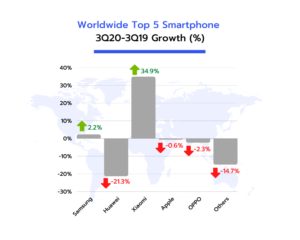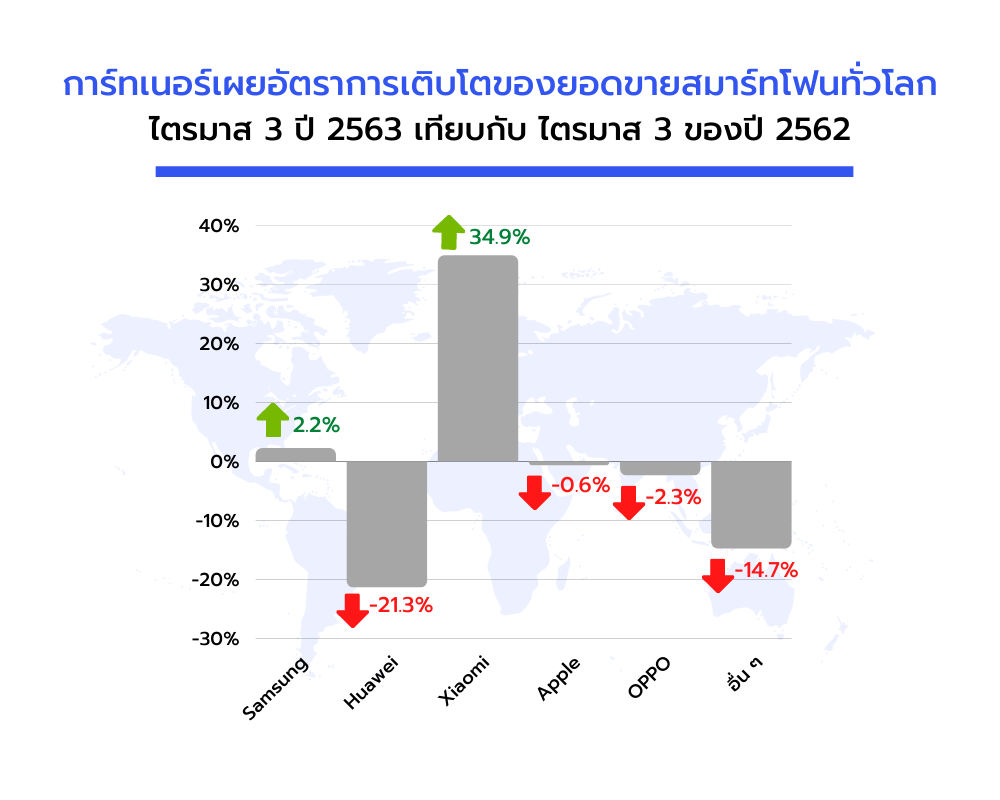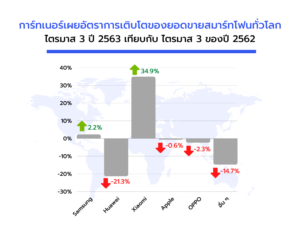
Xiaomi Moves Ahead of Apple to Become No. 3 Smartphone Vendor Worldwide
Worldwide smartphone sales to end-users totaled 366 million units in the third quarter of 2020, down 5.7% from the third quarter of 2019, according to Gartner, Inc. Overall global mobile phone sales to end users totaled 401 million units, a decline of 8.7% year-over-year.
After two consecutive quarters of a decline of 20%, quarterly smartphone sales have started to show signs of recovery sequentially. However, smartphone sales continued to remain weaker compared to the same time period in in 2019, even with vendors introducing multiple 5G smartphones and governments relaxing shelter-in-place instructions in some geographies.
“Consumers are limiting their discretionary spend even as some lockdown conditions have started to improve,” said Anshul Gupta, senior research director at Gartner. “Global smartphone sales experienced moderate growth from the second quarter of 2020 to the third quarter. This was due to pent-up demand from previous quarters.”
Economic uncertainties and continued fear of the next wave of the pandemic continue to put
pressure on nonessential spending through the end of 2020. The delay in 5G network upgrades has also limited the opportunity for smartphone vendors.
Among the top five smartphone manufacturers, Samsung held the No. 1 position with 22% market share (See Table 1). Xiaomi moved ahead of Apple into the No. 3 position for the first time ever with sales of 44.4 million units compared to Apple’s sales of 40.5 million units in the third quarter of 2020.
Table 1. Worldwide Top 5 Smartphone Sales to End Users by Vendor in 3Q20 (Thousands of Units)
| Vendor | 3Q20
Units |
3Q20 Market Share (%) | 3Q19
Units |
3Q19 Market Share (%) | 3Q20-3Q19 Growth (%) |
| Samsung | 80,816.0 | 22.0 | 79,056.7 | 20.3 | 2.2 |
| Huawei | 51,830.9 | 14.1 | 65,822.0 | 16.9 | -21.3 |
| Xiaomi | 44,405.4 | 12.1 | 32,927.9 | 8.5 | 34.9 |
| Apple | 40,598.4 | 11.1 | 40,833.0 | 10.5 | -0.6 |
| OPPO | 29,890.4 | 8.2 | 30,581.4 | 7.9 | -2.3 |
| Others | 119,117.4 | 32.5 | 139,586.7 | 35.9 | -14.7 |
| Total | 366,658.6 | 100.0 | 388,807.7 | 100.0 | -5.7 |
Due to rounding, some figures may not add up precisely to the totals shown.
Source: Gartner (November 2020)
“Early signs of recovery can be seen in a few markets, including parts of mature Asia/Pacific and Latin America. Near normal conditions in China improved smartphone production to fill in the supply gap in the third quarter which benefited sales to some extent,” said Mr. Gupta. “For the first time this year, smartphone sales to end users in three of the top five markets i.e., India, Indonesia and Brazil increased, growing 9.3%, 8.5% and 3.3%, respectively.”
Samsung and Xiaomi Recorded Growth for the First Time this Year
Samsung and Xiaomi were the only vendors in the top five to experience growth in the third quarter of 2020. Samsung benefited from its strong positioning amongst Android users and recorded sales of 80.8 million units. Xiaomi grew 34.9% in the third quarter of 2020, securing 12.1% market share and moving past Apple into the No. 3 position. Xiaomi gained from Huawei’s loss including strong performance in China.
“Apple sold 40.5 million units in the third quarter of 2020, a decline of 0.6% as compared to 2019,” said Annette Zimmermann, research vice president at Gartner. “The slight decrease was mainly due to Apple’s delayed shipment start of its new 2020 iPhone generation, which in previous years would always start mid/end September. This year, the launch event and shipment start began 4 weeks later than usual.”
Gartner clients can learn more in the report “Market Share: PCs, Ultramobiles and Mobile Phones, All Countries, 3Q20 Update.” Additional information on how organizations can use technology to get back on course post-COVID is available in the Reset your business strategy section on gartner.com. Complimentary research, insights and webinars are offered to help leaders build resilience on their path to business recovery.

